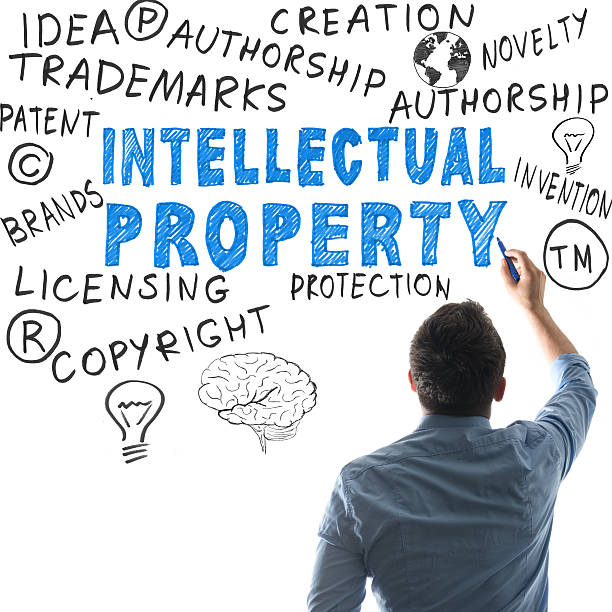In the rapidly evolving landscape of telecommunications, the valuation of patents holds immense significance. This article embarks on an exhaustive exploration of the intricacies involved in valuing telecommunications patents, delving into the nuances of methodologies, challenges, and strategic considerations that shape the valuation process.
The Foundation of Telecommunications Patents
Understanding the valuation of telecommunications patents requires a deep dive into the foundation of these innovative assets. At its core, telecommunications patents embody a diverse range of technological advancements that have propelled the field forward. Encompassing innovations in wireless communication, networking technologies, data transmission, and more, these patents serve as the building blocks of the modern telecommunications landscape. The expansive scope of telecommunications patents reflects the ceaseless quest for connectivity, efficiency, and novel ways to transmit information across the globe.

This section serves as a compass, guiding stakeholders through the multifaceted nature of telecommunications patents. Wireless communication patents, for instance, have been instrumental in the evolution from basic radio communication to the sophisticated mobile technologies prevalent today. Networking patents lay the groundwork for the complex web of interconnected devices, forming the backbone of modern communication infrastructure. Patents related to data transmission, including protocols and encryption methods, have played a pivotal role in ensuring the secure and efficient flow of information in our interconnected world. By providing this comprehensive overview, we establish the intricate tapestry of telecommunications patents, setting the stage for a nuanced exploration of their valuation.
The Evolution of Telecommunications Technology
The valuation of telecommunications patents is intrinsically tied to the dynamic evolution of technology, a journey that spans centuries and has witnessed remarkable transformations. Tracing this historical trajectory from the inception of telegraphy to the present era of 5G and beyond unravels the technological milestones that define the telecommunications industry. The early days of telegraphy marked the rudimentary beginnings of long-distance communication, laying the groundwork for subsequent breakthroughs. As technology advanced, so did the complexity of telecommunications systems, with the invention of the telephone revolutionizing voice communication and setting the stage for the expansive telecommunications networks we rely on today.
The evolution extends further with the advent of digital communication and the internet, shaping a global network that transcends geographical boundaries. The emergence of 5G technology represents a recent pinnacle, promising unprecedented speed and connectivity. Each technological epoch brings forth innovations that redefine the landscape, and telecommunications patents are the tangible outcomes of these advancements. The historical context provided in this section is indispensable for comprehending the significance and impact of telecommunications patents across different eras. Evaluating their relevance and market positioning requires an appreciation of the continuous innovation that has propelled the telecommunications industry forward, making it a dynamic and ever-changing domain.
Methodological Approaches to Telecommunications Patent Valuation
Having navigated the expansive landscape of telecommunications patents, the focus shifts to the intricate methodologies employed in their valuation. This critical phase involves the application of three primary approaches: the cost method, the market method, and the income method. Each of these methodologies offers a distinct lens through which the value of telecommunications patents can be assessed, contributing to a comprehensive understanding of their financial worth in the dynamic market.
The cost method entails a meticulous examination of the expenses incurred in developing and securing telecommunications patents. This approach provides insights into the tangible investments made in research, development, and obtaining regulatory approvals. By quantifying the actual costs associated with bringing these innovations to fruition, stakeholders gain a grounded perspective on the financial aspect of patent ownership. It is particularly valuable in instances where the direct costs of developing the patented technology can be accurately assessed. However, challenges may arise when estimating indirect costs or when the patented technology is part of a broader portfolio, necessitating a nuanced evaluation.
Moving on to the market method, the focus shifts to benchmarking in the competitive landscape of telecommunications. This approach involves analyzing comparable transactions and market multiples to glean insights into how similar patents are valued in the industry. By examining the market dynamics and comparing telecommunications patents with similar assets, stakeholders can gauge their relative value in the broader context. Market conditions, demand for specific technologies, and the competitive landscape all play crucial roles in shaping the perceived value of telecommunications patents. However, challenges may arise in finding truly comparable transactions or when market conditions are volatile, necessitating a thoughtful and well-informed analysis.
The income method, taking center stage in unraveling the revenue potential of telecommunications patents, involves forecasting future cash flows and evaluating licensing opportunities. This forward-looking perspective goes beyond the initial development costs, providing a strategic understanding of how the patented technology can generate revenue over time. By projecting income streams and considering the strategic considerations involved in maximizing revenue, stakeholders can make informed decisions about the value of their telecommunications patents. However, challenges may arise in accurately forecasting future cash flows, especially in a rapidly evolving industry where technological advancements can quickly impact market dynamics. Despite these challenges, the income method is a powerful tool for assessing the long-term financial potential of telecommunications patents. Examining these methodological approaches in tandem offers a holistic perspective on the valuation process, equipping stakeholders with the tools needed to derive accurate and meaningful valuations for their telecommunications patents.
Challenges in Telecommunications Patent Valuation
Moving beyond theoretical frameworks, the real-world terrain of telecommunications patent valuation presents a myriad of challenges. Navigating this landscape requires a keen understanding of the complexities associated with determining the value of patents in an industry characterized by rapid technological evolution and fierce competition. One significant challenge lies in keeping pace with the swift advancements in technology. The telecommunications sector is notorious for its continuous innovation, and patents often become outdated swiftly as new technologies emerge. This dynamism poses a challenge for practitioners aiming to assess the value of patents accurately. Moreover, the legal intricacies of intellectual property rights introduce another layer of complexity. Understanding and navigating the web of patent laws, licensing agreements, and potential litigation requires a specialized expertise that goes beyond traditional valuation methodologies. In an industry where legal disputes are not uncommon, ensuring a robust valuation that can withstand legal scrutiny is paramount.
Market dynamics further compound the challenges in telecommunications patent valuation. The evolving nature of the telecommunications market, influenced by shifting consumer demands, regulatory changes, and global economic conditions, introduces uncertainties that can impact the perceived value of patents. Stakeholders must navigate through these uncertainties, considering both short-term market fluctuations and long-term trends. An in-depth exploration of these challenges is crucial for practitioners, as it equips them with the insights needed to address these obstacles head-on. By developing strategies to mitigate the impact of technological, legal, and market-related challenges, practitioners can derive valuations that not only meet the scrutiny of stakeholders but also provide a realistic reflection of the telecommunications patents’ true worth.

Leveraging Valuation for Strategic Decision-Making
In the dynamic landscape of telecommunications, where companies must continually adapt to innovation and competition, the valuation of patents emerges as a strategic compass for decision-makers. This section delves into the profound impact of an accurate assessment of telecommunications patents on strategic decisions within companies. The valuation becomes more than just a financial metric; it transforms into a powerful tool guiding decisions related to portfolio management, licensing agreements, and partnerships. Understanding the strategic implications of valuation enables stakeholders to make informed choices aligned with broader business objectives.
Portfolio management, a critical aspect of strategic decision-making, involves optimizing the mix of patents within a company’s intellectual property portfolio. A precise valuation allows companies to identify high-value patents that should be retained, while also highlighting those with licensing or sale potential. Licensing agreements, another strategic avenue, can be strategically pursued based on the assessed value of telecommunications patents. Companies can leverage their intellectual property to enter into licensing partnerships, generating additional revenue streams. Additionally, partnerships and collaborations can be informed by the valuation of patents. Understanding the strategic importance and potential value of telecommunications patents enables companies to identify opportunities for collaboration, whether through joint ventures or strategic alliances.
Future Trends and Emerging Technologies
The landscape of telecommunications is marked by continuous innovation and the emergence of new technologies. This section anticipates future trends, exploring how developments like 6G, edge computing, and the Internet of Things (IoT) may impact the valuation of telecommunications patents. Staying ahead of these trends is crucial for companies seeking to maximize the value of their patent portfolios.
Navigating Legal and Regulatory Landscape
The valuation of telecommunications patents unfolds within a multifaceted terrain shaped not only by technological advancements and market dynamics but also by the intricate legal and regulatory landscape. This section delves into the legal framework, an essential dimension that profoundly influences the valuation process. Patent protection is a cornerstone in this landscape, as it establishes the exclusivity and rights associated with a telecommunications patent. Understanding the nuances of patent protection, including the scope and duration of these rights, is paramount for accurate valuation. Moreover, licensing agreements play a pivotal role, introducing contractual elements that impact the valuation of telecommunications patents. Assessing the terms and conditions of licensing agreements, including royalty rates and usage limitations, becomes integral to deriving a comprehensive valuation that reflects the true potential and limitations of the patents.
Navigating the legal landscape extends beyond protection and licensing to potential litigation scenarios. The threat of patent litigation looms large in the telecommunications industry, where companies fiercely compete for market share and technological dominance. Anticipating and understanding the potential legal challenges, including infringement claims or counterclaims, is crucial for stakeholders involved in patent valuation. Additionally, the regulatory environment can significantly influence the valuation of telecommunications patents. Compliance with industry-specific regulations, such as standards set by telecommunications authorities, can impact the perceived value of patents. By delving into the legal intricacies of patent protection, licensing agreements, and regulatory compliance, practitioners can ensure that their valuation is grounded in a comprehensive understanding of the legal landscape, thereby facilitating strategic decision-making.
Patent Litigation and Its Impact on Valuation
Patent litigation stands as a formidable force within the telecommunications industry, adding layers of complexity to the valuation of telecommunications patents. This section navigates the intricacies of patent litigation and its potential ramifications on the valuation process. In an industry marked by intense competition and the rapid evolution of technology, disputes over patent infringement and validity are not uncommon. Examining landmark cases and legal precedents provides practical insights into the complex interplay between legal disputes and the valuation of telecommunications patents.
The impact of patent litigation on valuation is multifaceted. First and foremost, the outcome of a litigation case can directly influence the enforceability and value of a telecommunications patent. Successful litigation can enhance the perceived strength of a patent, while unfavorable rulings may diminish its value. Legal precedents set during patent litigation cases contribute to the evolving understanding of patent rights and can shape valuation methodologies. Moreover, the potential costs associated with litigation, including legal fees and damages, are integral factors to consider in the valuation process. Stakeholders must assess the financial implications of past and potential litigation, understanding how these factors may impact the overall value and strategic importance of telecommunications patents. By delving into the complex relationship between patent litigation and valuation, practitioners gain a nuanced perspective that is essential for navigating the legal challenges inherent in the telecommunications industry.

Conclusion
In conclusion, the valuation of telecommunications patents is a multifaceted journey that demands a deep understanding of technology, market dynamics, legal considerations, and strategic foresight. Stakeholders in the telecommunications industry must navigate this complex landscape with acumen, leveraging valuation as a strategic tool to unlock the full potential of their patent portfolios. By staying attuned to technological trends, addressing challenges head-on, and considering legal and regulatory nuances, companies can position themselves to thrive in the ever-evolving world of telecommunications.

Leave a Reply